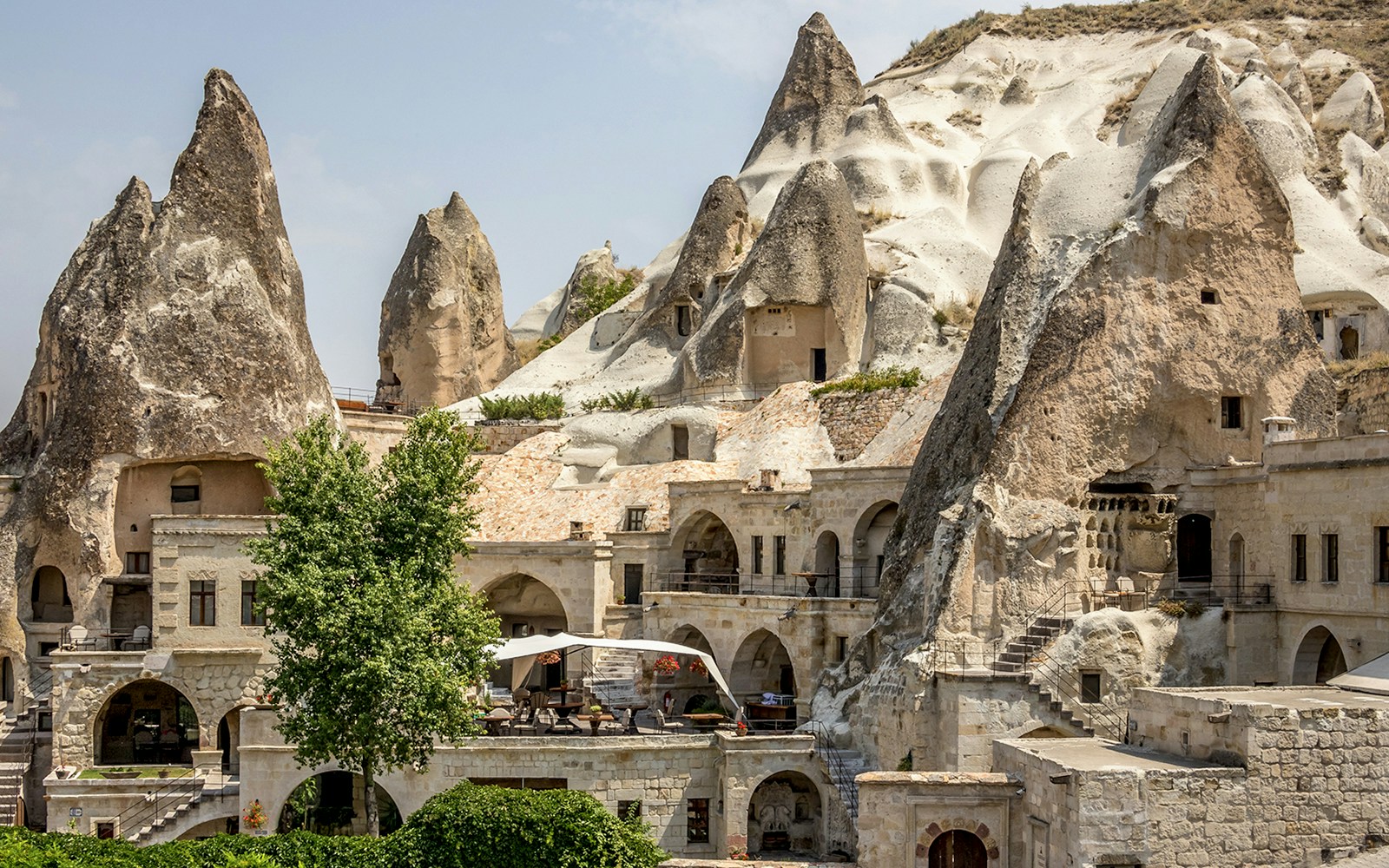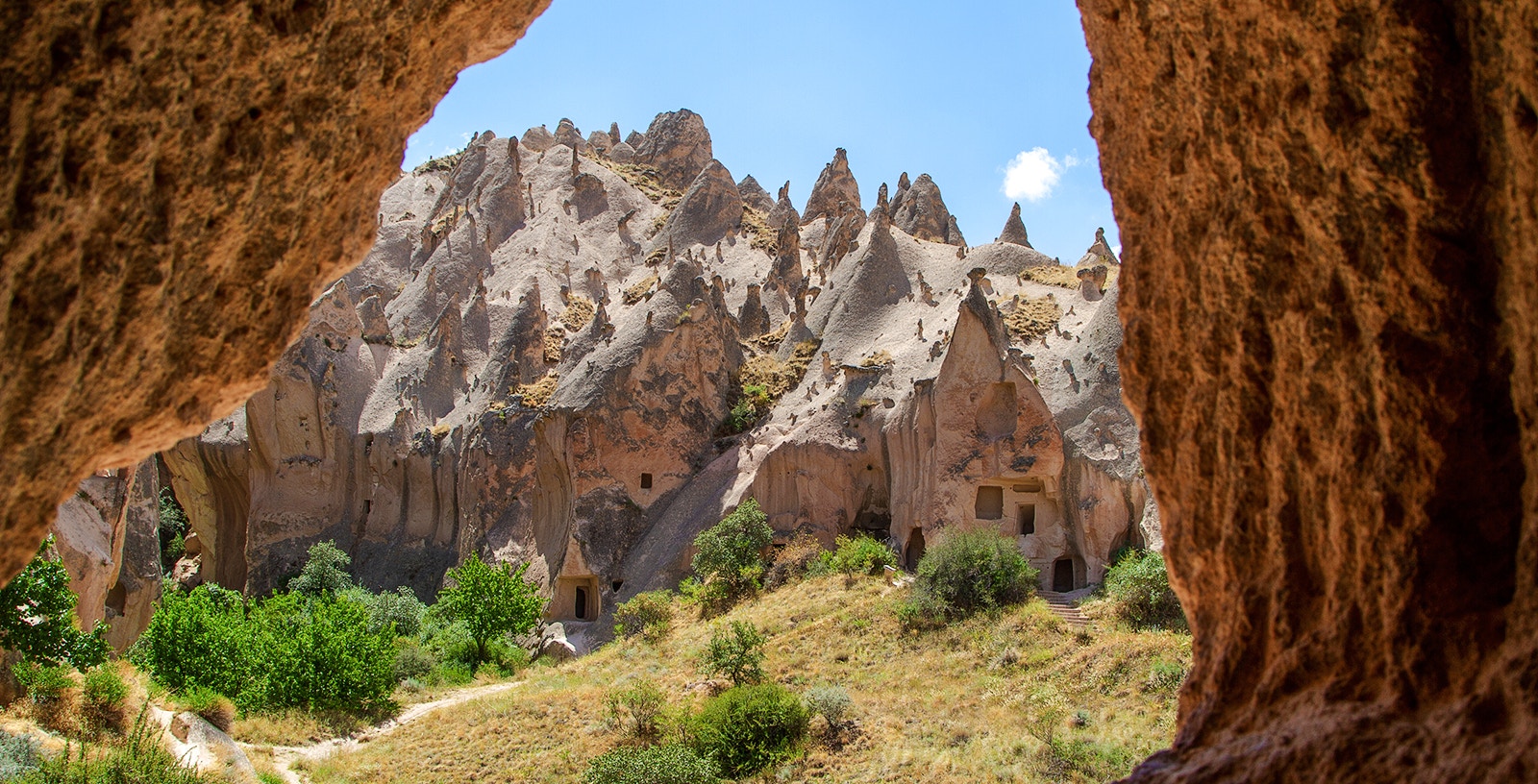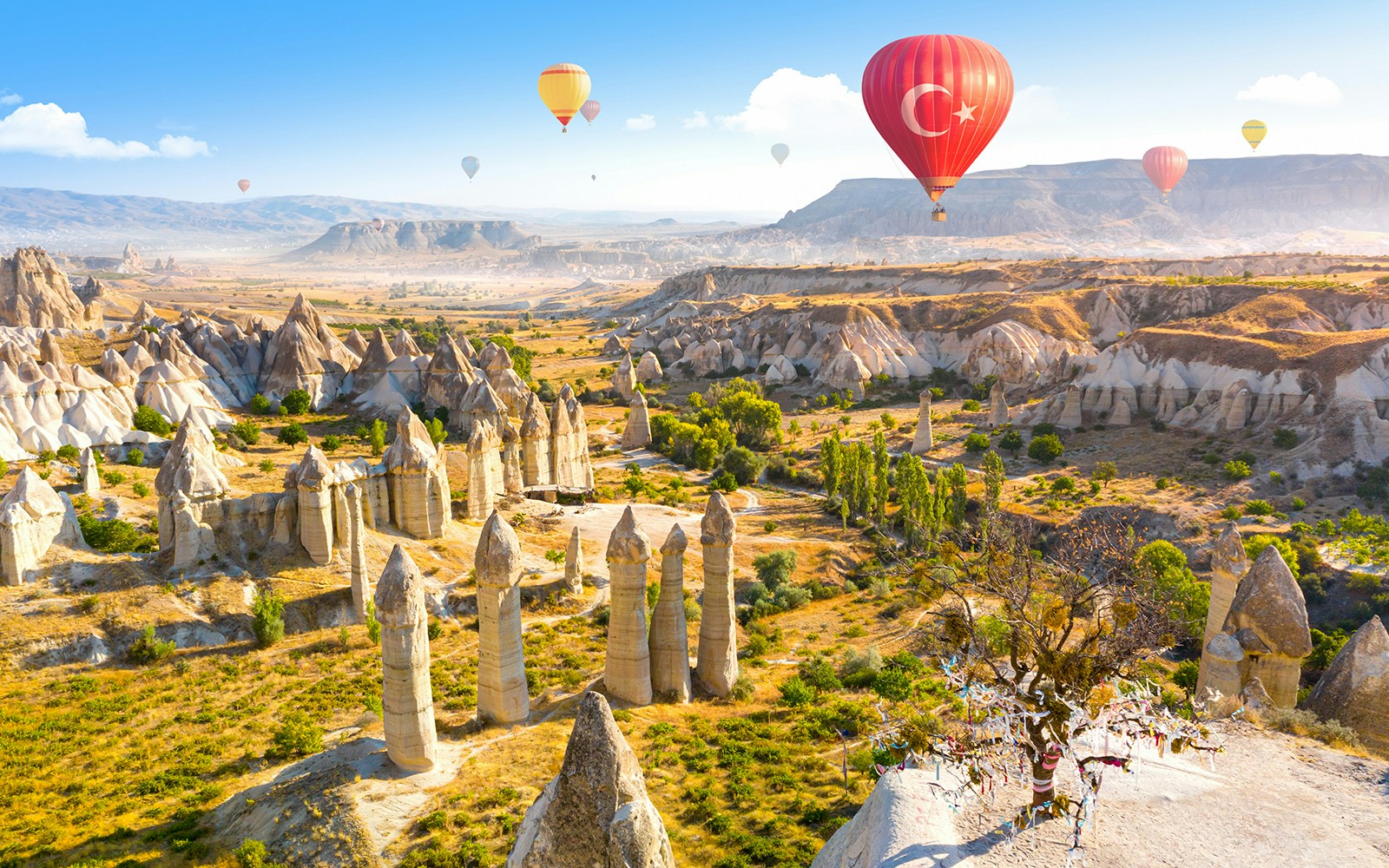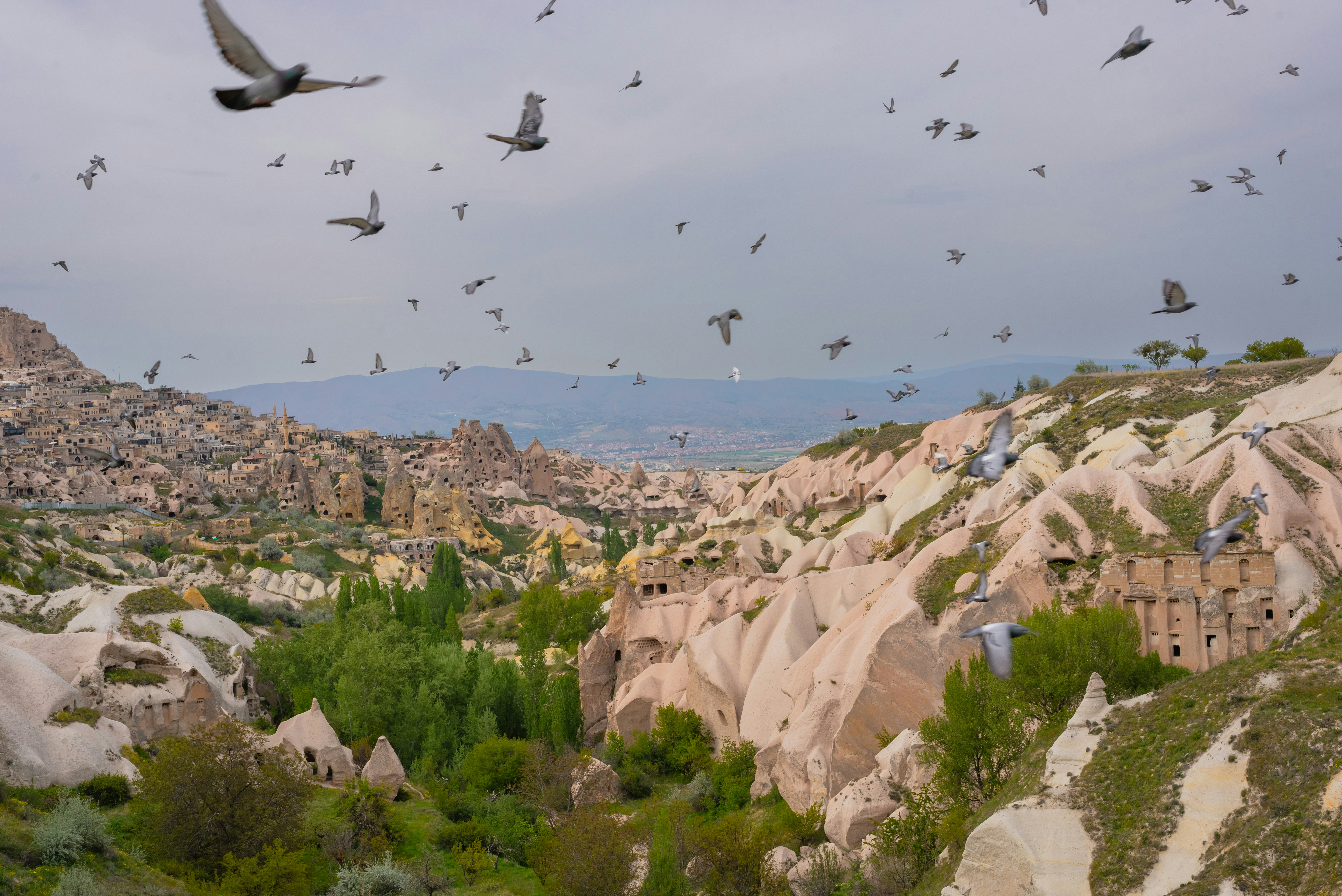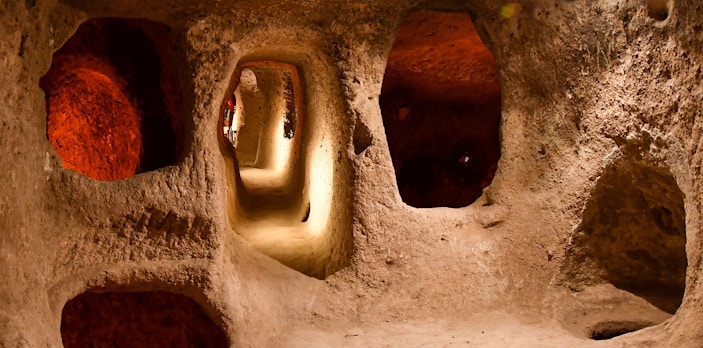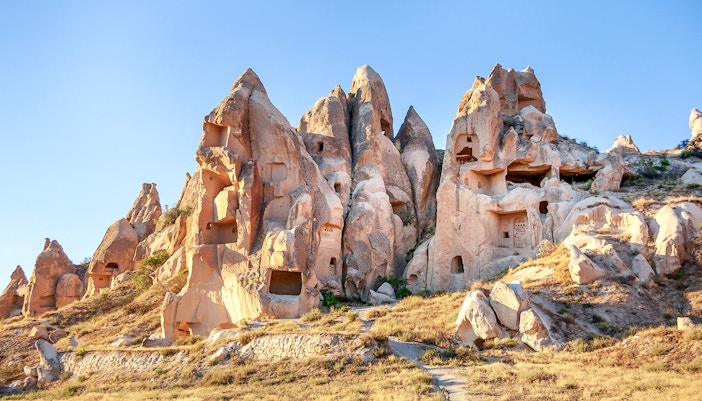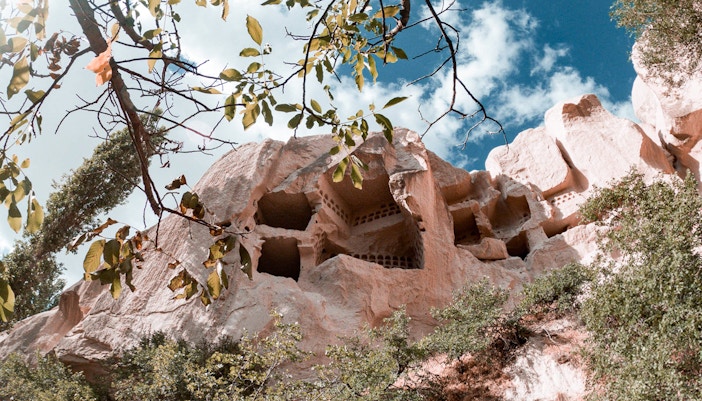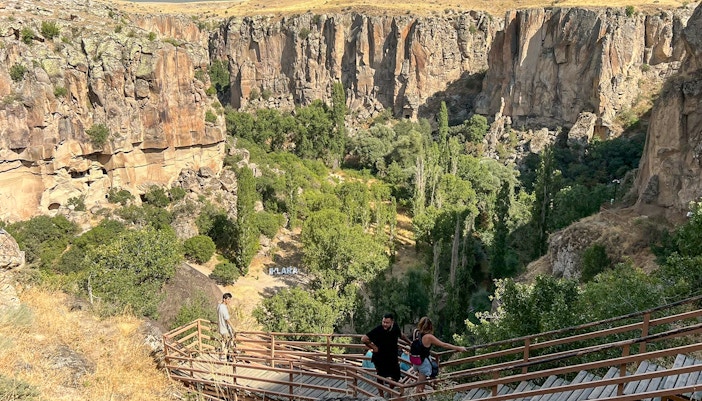- Volcanic beginnings. Millions of years ago, eruptions from nearby volcanoes (Mount Erciyes, Mount Hasan and others) blanketed central Anatolia with ash, pumice and lava. The ash compacted into a soft rock called tuff, harder lava flows later formed protective caps on some layers.
- Erosion creates the shapes. Wind, rain and seasonal freeze–thaw slowly eroded the softer tuff. Where a harder rock capstone protected the column underneath, the result was a tall pillar topped with a harder rock, the classic “fairy chimney”, geologically termed hoodoo. Areas without capstones eroded into valleys and cliffs with vivid color bands.
- Human carving. The tuff’s softness made it easy to hollow out. From early Christian communities (4th century and later), people carved homes, chapels, monasteries and entire underground refuges into the rock. That blend of natural and human-made features is a major reason Goreme is a World Heritage Site.
How were Goreme Valley and fairy chimneys formed

